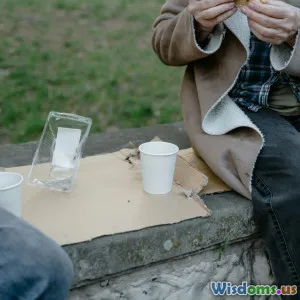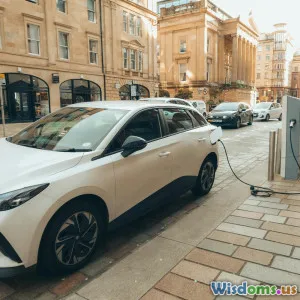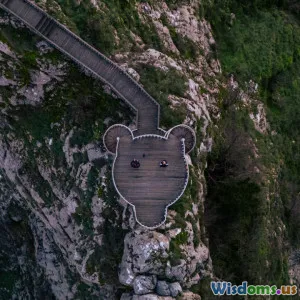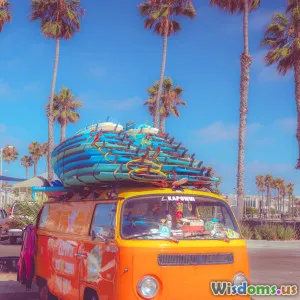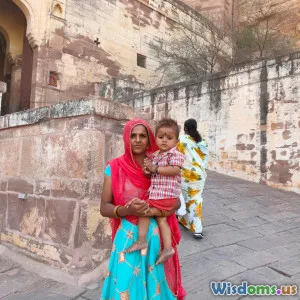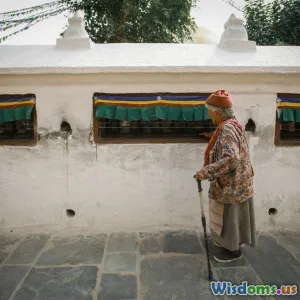
The Art of Slow Travel: Enjoying Every Moment
8 min read Discover the art of slow travel and learn to savor every moment for a richer, more meaningful journey. (0 Reviews)
The Art of Slow Travel: Enjoying Every Moment
Traveling fast through bucket lists often leaves us feeling disconnected, overwhelmed, or rushed. But what if the true beauty of travel was found not in checking off destinations, but in savoring the journey itself? Welcome to the art of slow travel—a transformative way to experience the world, placing depth over speed and mindfulness over hurry. This approach invites travelers to engage intimately with their surroundings, cultures, and even themselves, creating memories far richer and more lasting.
What Is Slow Travel?
Slow travel is a philosophy and practice that encourages moving through destinations deliberately and thoughtfully. Instead of rushing from landmark to landmark, slow travelers linger longer in fewer places, choosing quality over quantity. They immerse themselves in local culture and rhythms, forging meaningful connections with people and places.
Origins and Philosophy
Inspired partly by the slow food movement that originated in Italy in the 1980s, slow travel promotes sustainability and mindfulness. It pushes back against “tourist treadmill syndrome,” where travelers rush through sites to capture photos rather than truly experience them. As Pico Iyer, a renowned travel writer, reflected, "We travel, initially, to lose ourselves; and we travel, next, to find ourselves. But above all, we travel to open our hearts and eyes and learn what we have never known before." Slow travel facilitates that openness by slowing down the external pace.
Benefits of Slow Travel
Deeper Cultural Immersion
When you're not in a hurry, local customs, traditions, and everyday life emerge vibrantly. Spending a week in a small Italian village rather than a quick afternoon allows for conversations with shopkeepers, participation in festivals, or joining cooking classes with locals. This authenticity creates genuine understanding and appreciation beyond surface tours.
Better Mental and Physical Wellbeing
Studies have shown that slow-paced traveling reduces stress and improves mental clarity. A University of Innsbruck study found that tourists experiencing less hurried itineraries reported higher satisfaction and lower anxiety. Walking or biking through neighborhoods, rather than speeding in taxis, invigorates the body and sharpens your senses.
Environmental Sustainability
Slow travel aligns closely with eco-conscious tourism practices. By choosing to stay longer in fewer places, travelers decrease their carbon footprint caused by frequent flights and ground transport. Supporting local businesses instead of large chains further benefits the community economically and socially.
Greater Economic Impact
In prolonging stays, travelers contribute more substantially to local economies—booking accommodation with family-run guesthouses, buying produce from markets, or enjoying eateries typical of the region. This contrasts greatly with day-trippers who often funnel money to large tourism conglomerates.
How to Practice Slow Travel Effectively
Choose One Destination and Explore Deeply
Instead of cramming multiple cities in one trip, pick a single area to dwell in. For instance, travelers spending several weeks in Kyoto, Japan, can visit less-known temples, take part in traditional tea ceremonies, or join local ikebana (flower arranging) workshops.
Opt for Local Transportation and Walking
Travel by public transit, bike, or foot to soak in neighborhood vibes during transit. Take Barcelona’s metro or bicycle to picturesque corners and less touristy eateries; discover rarely visited backstreets firsthand.
Stay in Smaller Accommodations
Family-run inns, guesthouses, or Airbnb rentals provide authentic interactions and often insider tips. In New Orleans, staying in the Garden District’s historic mansions with hosts sharing southern hospitality leads to rich local tales and hidden gems.
Participate in Community Activities
Learning local crafts, attending neighborhood festivals, or volunteering with local organizations fosters genuine engagement. For example, volunteering at a community garden in Medellín, Colombia, offers insights far beyond conventional sightseeing.
Set Flexible, Low-pressure Itineraries
Allow for free days or spontaneous plans. Sometimes the most memorable experiences arise when you wander aimlessly or follow a local’s recommendation discovered over coffee.
Real-World Insights: Slow Travel Stories
Sarah Baxter, a travel writer who relocated abroad for multiple months, shares in Conde Nast Traveller: "My experience changed completely when I stopped racing to see everything. It was in those quiet cafes and walking through neighborhoods at sunrise that the city truly revealed itself."
In a global survey by Hostelworld, over 65% of respondents preferred longer stays and engaging fully rather than whirlwind visits, citing deeper fulfillment as the key reason.
Overcoming Challenges in Slow Travel
While slow travel sounds idyllic, it requires mindset shifts and planning. Some travelers worry about budget constraints, but surprisingly, slow travel can be cost-effective by reducing daily transportation costs and avoiding expensive, rushed sightseeing tours.
Scheduling time off from traditional jobs or responsibilities can be a hurdle; many find remote work or sabbaticals as viable solutions. Embracing uncertainty and spontaneity might feel uncomfortable initially but leads to richer experiences.
Conclusion: Embrace the Journey
Slow travel is more than a trend; it’s a holistic approach to rediscovering the joy of travel. By slowing down, travelers cultivate deeper connections with cultures, landscapes, and themselves. It dismantles the notion that travel needs speed to be successful and instead nurtures presence, curiosity, and gratitude. Whether wandering through a quiet village, sharing meals with locals, or simply observing the rhythm of daily life through slow travel, every moment becomes an opportunity to learn and to be.
In the words of Ralph Waldo Emerson, "It's not the destination, it's the journey." Slow travel reminds us to savor that journey fully.
Start your slow travel adventure today by focusing on quality experiences and mindful exploration — your next trip could change your perspective forever.
Rate the Post
User Reviews
Popular Posts











